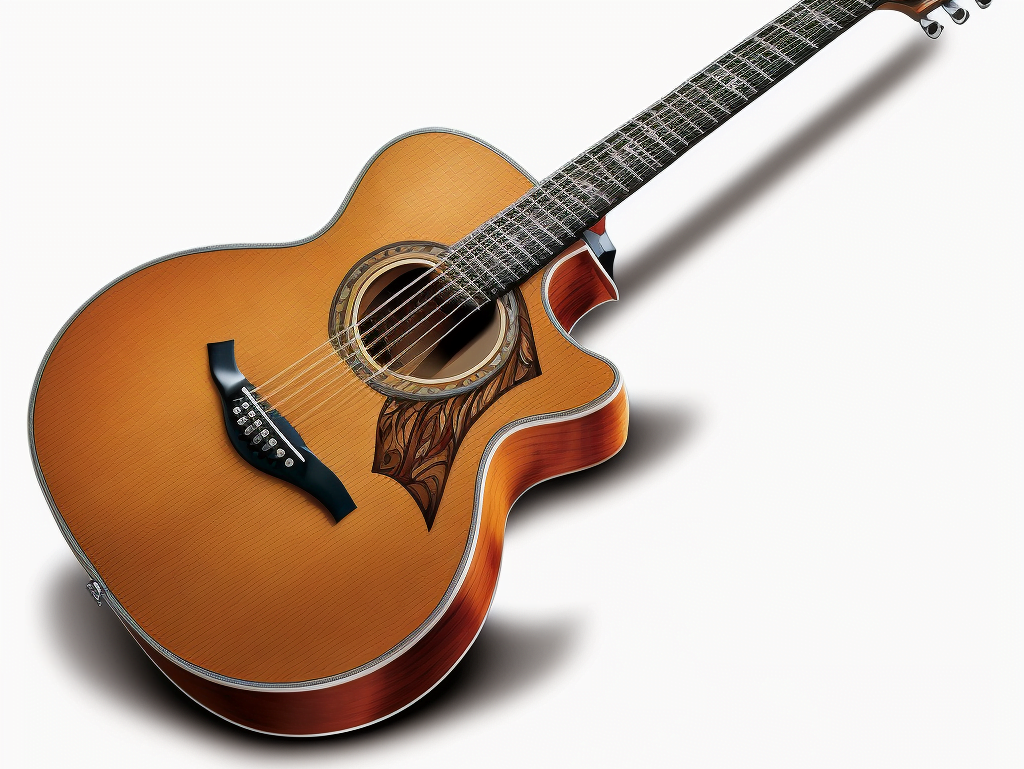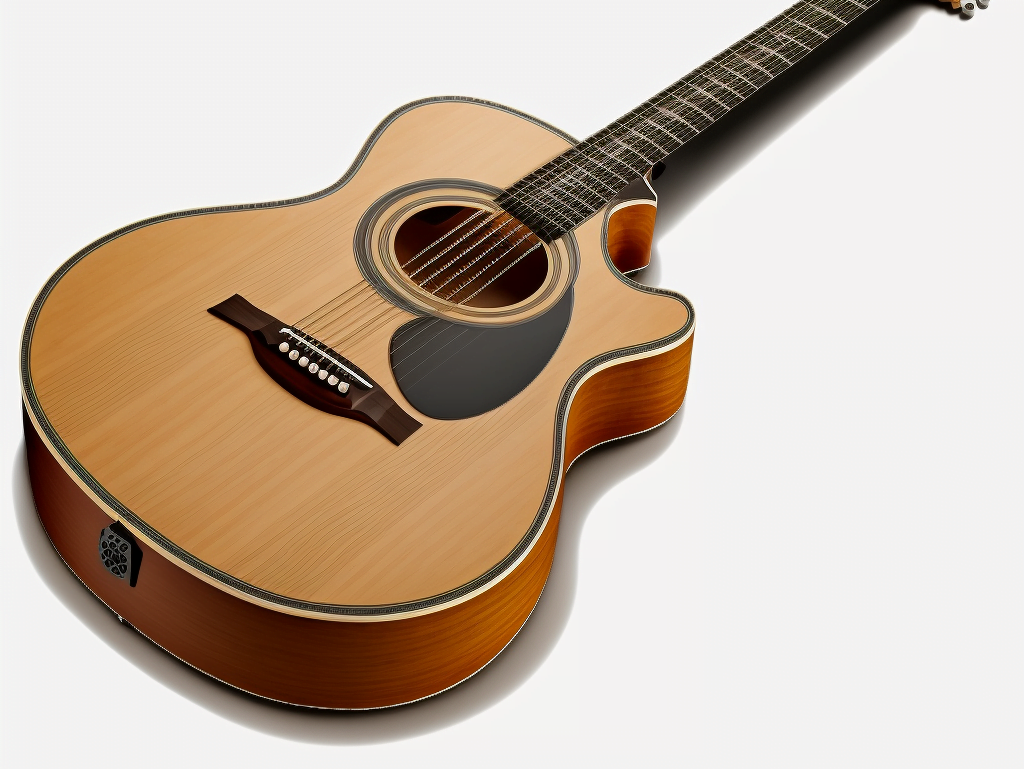Guitars have evolved over time to meet the demands of musicians and players. One of the most notable features that have been added to guitars is the cutaway. A cutaway is a feature on a guitar that allows players to reach the higher frets with ease. There are several types of cutaways, but two of the most popular are the Florentine and Venetian cutaways. In this article, we will take a closer look at the Florentine and Venetian cutaways, and compare their design, aesthetics, playability, and suitability for different types of music.
The Florentine cutaway, also known as a double cutaway, has a curved shape that extends all the way to the tail of the guitar. This type of cutaway is named after the city of Florence in Italy, where it was first used on guitars in the early 20th century.
The Venetian cutaway, also known as a single cutaway, has a straight edge that extends to the middle of the guitar’s body. This type of cutaway is named after the city of Venice in Italy, where it was first used on guitars in the early 20th century.
The purpose of this article is to provide a comprehensive overview of the Florentine and Venetian cutaways, and to help guitar players understand the differences between the two so that they can make an informed decision when choosing a guitar.
The Florentine Cutaway

History and origin
The Florentine cutaway, also known as a double cutaway, is a feature on a guitar that allows players to reach the higher frets with ease. This type of cutaway is named after the city of Florence in Italy, where it was first used on guitars in the early 20th century. It’s credited to be first used by James D’Aquisto in his Archtop guitar designs and later by other Luthiers. Its main purpose was to make it easier for jazz musicians to play extended chord shapes, or navigate more complex harmonic structures.
Characteristics and features
The Florentine cutaway is characterized by its curved shape that extends all the way to the tail of the guitar. This type of cutaway provides players with easy access to the upper frets, which can be especially useful for playing chords and solos that require the use of the higher frets. The curved shape of the cutaway also adds a unique aesthetic to the guitar. In some cases, the cutaway can be so pronounced that it affects the guitar’s tonal balance by allowing the sound to escape through the cutaway.
Advantages and disadvantages
One of the main advantages of the Florentine cutaway is its ease of use. The cutaway allows players to reach the upper frets with ease, making it ideal for playing extended chord shapes, solos, and other complex musical phrases. The design of the cutaway also adds a unique aesthetic to the guitar, making it a popular choice among musicians who want a guitar that stands out from the crowd.
On the other hand, one of the main disadvantages of the Florentine cutaway is that it can affect the guitar’s tonal balance by allowing sound to escape through the cutaway. This can result in a loss of volume and clarity, especially in the bass frequencies. Additionally, it can be more prone to Feedback, especially in a live performance with high volume.
In general, the Florentine cutaway is a good option for musicians who want easy access to the upper frets and appreciate the unique aesthetic of the cutaway. But it’s important to keep in mind that this type of cutaway may not be the best option for all types of music and playing styles.
The Venetian Cutaway

History and origin
The Venetian cutaway, also known as a single cutaway, is a feature on a guitar that allows players to reach the higher frets with ease. This type of cutaway is named after the city of Venice in Italy, where it was first used on guitars in the early 20th century. The Venetian cutaway design was developed as an alternative to the Florentine cutaway, which was popular among jazz musicians. The straight-edge design of the Venetian cutaway allows for easy access to the upper frets while preserving the guitar’s tonal balance.
Characteristics and features
The Venetian cutaway is characterized by its straight edge that extends to the middle of the guitar’s body. This type of cutaway provides players with easy access to the upper frets while preserving the guitar’s tonal balance. The straight-edge design of the cutaway also adds a more traditional look to the guitar.
Advantages and disadvantages
One of the main advantages of the Venetian cutaway is that it allows players to reach the upper frets with ease, while preserving the guitar’s tonal balance. This makes it ideal for playing complex musical phrases, solos, and extended chord shapes. The design of the cutaway also adds a more traditional look to the guitar, making it a popular choice among musicians who prefer a more classic aesthetic.
One of the main disadvantages of the Venetian cutaway is that it does not provide as much access to the upper frets as the Florentine cutaway. This can make it more difficult for some musicians to play complex musical phrases, solos, and extended chord shapes. Additionally, the straight-edge design of the cutaway may not appeal to musicians who prefer a more unique aesthetic.
In general, the Venetian cutaway is a good option for musicians who want easy access to the upper frets and prefer a more traditional look for their guitar. However, keep in mind that this type of cutaway may not be the best option for all types of music and playing styles.
Comparison: The Florentine vs Venetian Cutaways
Comparison of the design and aesthetics of the two cutaways:
The Florentine cutaway is characterized by its curved shape that extends all the way to the tail of the guitar, while the Venetian cutaway is characterized by its straight edge that extends to the middle of the guitar’s body. The curved shape of the Florentine cutaway adds a unique aesthetic to the guitar, while the straight-edge design of the Venetian cutaway gives it a more traditional look. Some players prefer the look of the Florentine for its uniqueness, and some prefer the more classic look of the Venetian cutaway.
Comparison of the playability and performance
In terms of playability and performance, the Florentine cutaway provides easier access to the upper frets, which can be especially useful for playing chords and solos that require the use of the higher frets. However, the curved shape of the cutaway can affect the guitar’s tonal balance by allowing sound to escape through the cutaway, which can result in a loss of volume and clarity, especially in the bass frequencies. On the other hand, the Venetian cutaway provides access to the upper frets while preserving the guitar’s tonal balance, however, it doesn’t provide as much access to the upper frets as the Florentine cutaway. This can make it more difficult for some musicians to play complex musical phrases, solos, and extended chord shapes.
Comparison of the suitability for different types of music:
In terms of suitability for different types of music, the Florentine cutaway may be more suitable for jazz, fusion, and other genres that require extended chord shapes and complex harmonic structures, due to the easy access to the upper frets. However, the curved shape of the cutaway can make it less suitable for genres that require a strong bass response, such as rock, metal or blues. On the other hand, the Venetian cutaway is more versatile and it’s suitable for a wide range of music genre, and it’s especially good for genres that require a traditional aesthetic, but may not be as well suited for jazz, fusion or other genres that require extended chord shapes and complex harmonic structures.
Conclusion
In conclusion, both the Florentine and Venetian cutaways offer their own unique set of advantages and disadvantages, and the best choice will depend on the specific needs of the musician or the style of music being played. While the Florentine cutaway is best for extended chord shapes and complex harmonic structures, the Venetian cutaway is more versatile and preserves the tonal balance.
Read more: Guitar Anatomy


